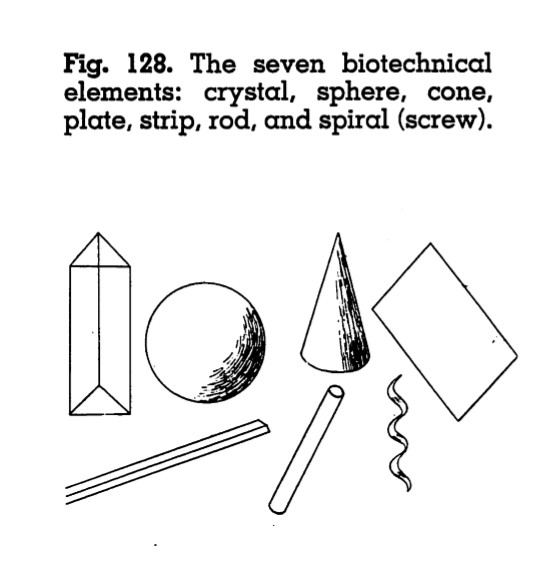Thomas Harrison: 1910: The Emancipation of Dissonance (1996)
Filed under book | Tags: · 1910s, aesthetics, art, art history, avant-garde, expressionism, literature, music, music history, painting, philosophy, sociology

The year 1910 marks an astonishing, and largely unrecognized, juncture in Western history. In this perceptive interdisciplinary analysis, Thomas Harrison addresses the extraordinary intellectual achievement of the time. Focusing on the cultural climate of Middle Europe and paying particular attention to the life and work of Carlo Michelstaedter, he deftly portrays the reciprocal implications of different discourses—philosophy, literature, sociology, music, and painting. His beautifully balanced and deeply informed study provides a new, wider, and more ambitious definition of expressionism and shows the significance of this movement in shaping the artistic and intellectual mood of the age.
1910 probes the recurrent themes and obsessions in the work of intellectuals as diverse as Egon Schiele, Georg Trakl, Vasily Kandinsky, Georg Lukàcs, Georg Simmel, Dino Campana, and Arnold Schoenberg. Together with Michelstaedter, who committed suicide in 1910 at the age of 23, these thinkers shared the essential concerns of expressionism: a sense of irresolvable conflict in human existence, the philosophical status of death, and a quest for the nature of human subjectivity. Expressionism, Harrison argues provocatively, was a last, desperate attempt by the intelligentsia to defend some of the most venerable assumptions of European culture. This ideological desperation, he claims, was more than a spiritual prelude to World War I: it was an unheeded, prophetic critique.
Publisher University of California Press, 1996
ISBN 0520200438, 9780520200432
264 pages
Reviews (Martino Marazzi; Tyrus Miller; Daniela Bini; Christopher Hailey; Richard Mattin; Dennis Sexsmith)
Review (Laura A. McLary, Monatshefte)
Review (Thomas Kovach, Austrian History Yearbook)
Review (Marco Codebo, Carte Italiane)
Wikipedia
PDF (some images are missing)
View online (HTML, with images)
R. Bruce Elder: Harmony and Dissent: Film and Avant-garde Art Movements in the Early Twentieth Century (2008)
Filed under book | Tags: · abstract cinema, art history, avant-garde, cinema, colour, constructivism, dissent, experimental film, film, film history, film theory, marxism, modernism, music, occultism, productivism, revolution, suprematism, symbolism, theology

“R. Bruce Elder argues that the authors of many of the manifestoes that announced in such lively ways the appearance of yet another artistic movement shared a common aspiration: they proposed to reformulate the visual, literary, and performing arts so that they might take on attributes of the cinema. The cinema, Elder argues, became, in the early decades of the twentieth century, a pivotal artistic force around which a remarkable variety and number of aesthetic forms took shape.
To demonstrate this, Elder begins with a wide-ranging discussion that opens up some broad topics concerning modernity’s cognitive (and perceptual) regime, with a view to establishing that a crisis within that regime engendered some peculiar, and highly questionable, epistemological beliefs and enthusiasms. Through this discussion, Elder advances the startling claim that a crisis of cognition precipitated by modernity engendered, by way of response, a peculiar sort of “pneumatic (spiritual) epistemology.” Elder then shows that early ideas of the cinema were strongly influenced by this pneumatic epistemology and uses this conception of the cinema to explain its pivotal role in shaping two key moments in early-twentieth-century art: the quest to bring forth a pure, “objectless” (non-representational) art and Russian Suprematism, Constructivism, and Productivism.”
Publisher Wilfrid Laurier University Press, Waterloo, 2008
ISBN 1554580285, 9781554580286
480 pages
Review: David Sterritt (Quarterly Review of Film and Video, 2011).
PDF (updated on 2019-12-14)
Comments (7)Oliver I.A. Botar: Prolegomena to the Study of Biomorphic Modernism: Biocentrism, László Moholy-Nagy’s “New Vision” and Ernő Kállai’s Bioromantik (1998)
Filed under thesis | Tags: · aesthetics, art history, avant-garde, biocentrism, biology, constructivism, modernism, nature, photography, science

“Focusing on Weimar Germany, I ground the study of biomorphic Modernism in Ernő Kállai‘s 1932 identification of a trend he termed Bioromantik. Kállai wrote from a biocentric position, an amalgam of Nature Romanticism and biologism espoused by Nietzsche, Ernst Haeckel, Ludwig Klages, Oswald Spengler, Raoul Francé and Hans Prinzhorn in the early 20th century, here established as a politically-charged category of intellectual history. Kállai characterized Bioromantik as art, the imagery, forms or themes of which express Monist, Neo-Vitalist, lebensphilosophisch and Organicist, i.e. biocentric concepts such as the life-force, creative/destructive aspects of nature, and our unity with it. The work of artists he cited (Arp, Klee, Moore, Kandinsky, Ernst, etc. ) is biomorphic Modernist in style. Kállai’s conception derives from his realization of the similarity between biomorphic art and scientific photography, here termed the ‘naturamorphic analogy’, a topos traceable to Kandinsky’s pre-war writing.
Probably inspired by Walter Benjamin’s review of Karl Blossfeldt’s photographs, Kállai’s epiphany occurred in the Moholy-Nagy-curated ‘Raum-1’ of the 1929 Film und Foto show in Stuttgart; in effect a three-dimensional statement of his ‘New Vision’ that aestheticized scientific photography, and that — like Moholy’s entire pedagogical project — I show to be rooted in biocentrism. Thus, the profound effect biocentric thinkers had on the milieux Moholy emerged from is discussed: The fin-de-siècle Haeckelian tradition of normative aestheticized scientific imagery is shown to underlie New Vision; the biocentric wing of the Jugendbewegung is revealed as a source of Moholy’s biocentric pedagogy; inspired by Francé, ‘Biocentric Constructivism’ is identified as a discourse engaged in by Mies, Moholy, Lissitzky, Hausmann and Meyer; the Bauhaus, with attention to Gropius, Klee, Kandinsky, Schlemmer and Meyer, is recast as a locus of biocentric ideas.
Like others, Kállai proposed a ‘psychobiological’ explanation for the naturamorphic analogy: the artists’ identity with nature and their consequent intuitive imaging of its unseen aspects also revealed by science. I show how the aestheticization of scientific images effected by New Vision enabled Modernist artists and critics to be exposed to such imagery — an historical alternative to the essentialist explanation that constitutes a basis for research on biomorphic Modernist art.” (Abstract)
Department of the History of Art, University of Toronto, 1998
762 pages

